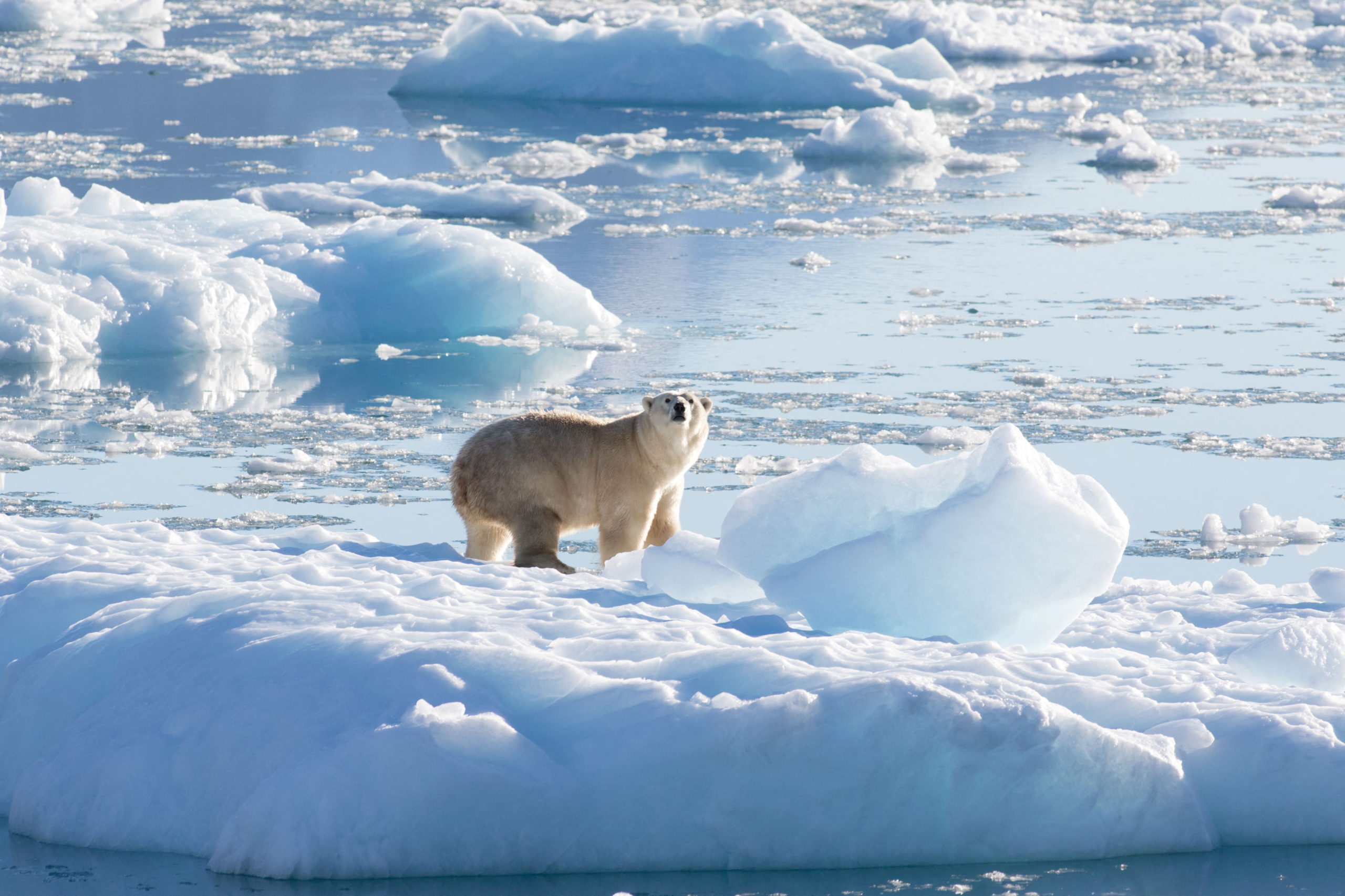Isolated Greenland polar bear population adapts to climate change
With less access to sea ice, bears in southeast Greenland have learned to hunt from chunks of glacier ice.

WASHINGTON — An isolated population of polar bears in Greenland has made a clever adaptation to the decline in the sea ice they depend upon as a platform for hunting seals, offering a ray of hope for this species in at least some locales in the warming Arctic.
This population of several hundred bears, inhabiting part of Greenland’s southeast coast on the Denmark Strait, has survived with only abbreviated access to ice formed from frozen seawater by hunting instead from chunks of freshwater ice breaking off from the huge Greenland Ice Sheet, researchers said on Thursday.
“They survive in fjords that are sea ice free more than eight months of the year because they have access to glacier — freshwater — ice on which they can hunt. This habitat, meaning glacier ice, is uncommon in most of the Arctic,” said University of Washington polar scientist Kristin Laidre, lead author of the study published in the journal Science.
They were found to be the world’s most genetically isolated polar bears, distinct from the species’ 19 other known populations. They have been almost entirely cut off from other polar bears for at least several hundred years, with no evidence of any leaving, though some evidence of an occasional arrival from elsewhere.
These bears are “living at the edge of what we believe to be physiologically possible,” said evolutionary molecular biologist and study co-author Beth Shapiro of the University of California, Santa Cruz and the Howard Hughes Medical Institute.
“These bears are not thriving. They reproduce more slowly, they’re smaller in size. But, importantly, they are surviving. It’s hard to know yet whether these differences are driven by genetic adaptations or simply by a different response of polar bears to a very different climate and habitat,” Shapiro added.
Polar bears, numbering roughly 26,000 in all, are particularly imperiled by climate change as rising temperatures reshape the Arctic landscape and deprive them of their customary sea-ice platform for hunting their main prey, ringed seals and bearded seals.
“Loss of Arctic sea ice is still the primary threat to all polar bears. This study does not change that,” Laidre said.
The southeast Greenland population is geographically hemmed in, with jagged mountain peaks and the Greenland Ice Sheet on one side and the open ocean on the other. In springtime, the bears roam sea ice and glaciers, with icebergs frozen solid into the sea ice. In summertime, there is open water with floating pieces of glacial ice at the fronts of glaciers, from which the bears hunt. This type of habitat is found only in parts of Greenland and Svalbard, an Arctic Ocean archipelago.
“This use of glacier ice has not been documented before and represents a unique behavior,” said John Whiteman, chief research scientist for the conservation group Polar Bears International and a biology professor at Old Dominion University in Virginia, who was not involved in the study.
“This study should also prompt a search for similar habitats across the current polar bear range. However, glacial ice is a minor component of the marine ice cap in the Arctic, in comparison to ice formed from freezing seawater,” Whiteman said.
The researchers gathered genetic, movement and population data including satellite tracking of some bears and observing them from a helicopter.
“They simply look like a small yellow dot on the white ice, or you follow their tracks in the snow to find them,” Laidre said.
Shapiro said the findings may provide a glimpse of how polar bears survived previous warm periods over the roughly 500,000 years since they split evolutionarily from brown bears.
“Polar bears are in trouble,” Shapiro added. “It is clear that if we can’t slow the rate of global warming that polar bears are on a trajectory to become extinct. The more we can learn about this remarkable species, the better able we will be to help them to survive the next 50 to 100 years.”




